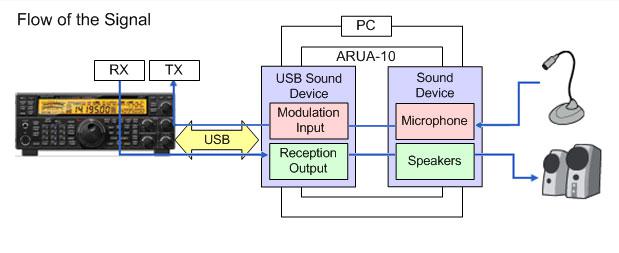Kenwood TS-590S User Manual

TS-590S
USB Audio
Setting Manual
© October/15/2010

|
Contents |
|
1. About the TS-590S USB Audio Function .................................................................... |
3 |
|
2. |
Operation Using the USB Audio Function .................................................................. |
4 |
3. |
Installing the ARUA-10 Software ................................................................................ |
5 |
|
3.1 System Requirements .......................................................................................... |
5 |
|
3.2 Installation ............................................................................................................ |
5 |
|
3.3 About Virtual COM Port Driver.............................................................................. |
5 |
4. |
Settings...................................................................................................................... |
7 |
|
4.1 Transceiver Settings ............................................................................................. |
7 |
|
4.1.1 Setting Up an Audio Input Route from the Rear Terminal ............................... |
7 |
|
4.1.2 Audio I/O Level Settings................................................................................. |
7 |
|
4.1.3 Mixed Beep Setting to External Audio Outputs............................................... |
7 |
|
4.1.4 Data VOX Settings ......................................................................................... |
8 |
|
4.1.5 Data VOX Delay Time Setting ........................................................................ |
8 |
|
4.1.6 Data VOX Gain Setting .................................................................................. |
8 |
|
4.1.7 Allocating DATA SEND Functions to PF Keys ................................................ |
8 |
|
4.2. Setting Transmission Methods for Audio Input to the Rear Terminal .................... |
9 |
|
4.3 ARUA-10 Settings................................................................................................ |
10 |
5. |
Limitations IMPORTANT ....................................................................................... |
12 |
|
5.1 USB Port Connectivity Limitations ....................................................................... |
12 |
6. |
Frequently Asked Questions ..................................................................................... |
13 |
Disclaimer:
All efforts have been made regarding the accuracy of the contents described in this document. However, there is a possibility of misprints and of descriptions that may cause misunderstanding. Kenwood Corporation bears absolutely no responsibility for damages arising thereof.
Kenwood Corporation may revise and amend the products information described in this document without notice. Kenwood Corporation bears absolutely no responsibility for damages arising thereof.
Windows is a registered trademark or trademark of Microsoft Corporation in the United States and other countries.
.NET Framework is a registered trademark or trademark of Microsoft Corporation in the United States and other countries.
Bluetooth is a registered trademark or trademark of Bluetooth SIG, Inc.
The names of all products described hereafter are the trademarks or registered trademarks of their respective manufacturers.
® and ™ are omitted throughout the text.
2
1.About the TS-590S USB Audio Function
When the TS-590S is connected to the computer using a USB cable, the USB audio function can be used to play incoming audio over the computer speakers and transmit audio from the computer microphone.
This setup guide explains how to set up the TS-590S to use its USB audio function and how to use the ARUA-10 software to control input/output routes of the USB audio signals from a computer.
Important
¾USB audio may be delayed due to unavoidable principles. Consequently, do not perform operations (such as contests or pile-ups requiring quick responses) for which delays are likely to be a problem.
¾Refer to Chapter 5 “Limitations" for other limitations.
¾To use the USB audio function, knowledge not only of transceivers but also of computers is required. Kenwood does not offer support for purchasing computers or for customer's computers.
¾Kenwood Corporation shall bear no responsibility for related damage such as damage caused by missed communications and dialog opportunities due to incorrect customer settings, nonconformances, or misoperations as a result of using this document or the ARUA-10 software.
3

2. Operation Using the USB Audio Function
Operation using the USB audio function is explained using the diagram below.
Diagram 1: Operation Using the USB Audio Function
The left side of the diagram shows the TS-590S unit while the area in the square on the rightside indicates the computer. The TS-590S and the computer are connected by a USB cable. The microphone and speakers connected to the computer are shown on the far right.
Audio reception is explained first. Incoming audio from the TS-590S is sent to the computer via the USB cable and played over the speakers connected to the computer.
A signal pathway on the computer to connect the USB audio device input signals and output from the audio device connected to the speaker is necessary.
Audio transmission is explained next. Audio input from the microphone connected to the computer passes through the USB cable and is transmitted by the TS-590S unit.
A signal pathway on the computer between input signals from the audio device connected to the microphone and output from the USB audio device is necessary.
The ARUA-10 software serves as a bridge for these signal paths within the computer.
The ARUA-10 software lets you select which speaker and microphone are used for transceiver operations when there are multiple speakers and microphones connected to the computer.
4

3. Installing the ARUA-10 Software
3.1 System Requirements
In order to use the ARUA-10 software, your computer must meet the following requirements.
|
Chart 1 - Computer Requirements |
||
|
Category |
|
Specifications |
|
CPU |
|
CPU must exceed performance recommended for your |
|
|
|
operating system |
|
MEMORY |
|
System memory must exceed that recommended for |
|
|
|
your operating system |
|
HDD |
|
Over 100 MB free space |
|
CD-ROM/ DVD-ROM Drive |
|
Not required |
|
USB Port |
|
When using the system described above, a single USB |
|
|
|
2.0 port |
|
Input/Output Devices |
|
Keyboard, mouse, microphone, speakers |
|
Display |
|
XGA 1024 × 768 or above |
|
Sound |
|
Required |
|
OS |
|
Windows XP (SP3 or later) |
|
|
|
Windows Vista (SP1 or later, 32-bit only) |
|
|
|
Windows 7(32-bit or 64-bit) |
|
|
|
Not compatible with other operating systems |
3.2 Installation |
|
|
|
Download and install the ARUA-10 software from the following Kenwood website: http://www.kenwood.com/i/products/info/amateur/software_download.html
When connecting the TS-590S to a computer using a USB cable for the first time, drivers required for the USB Audio Function are automatically installed.
If you are using an ARCP-590 and Computer Control Command, you must install the “Virtual COM port driver” to connect the TS-590S with a USB cable.
Download and install the driver from the following Kenwood website: http://www.kenwood.com/i/products/info/amateur/software_download.html
3.3 About Virtual COM Port Driver
When connecting the TS-590S to a computer with a USB cable for the first time, the “New Hardware Detected Wizard” message appears. This is the install prompt for the Virtual COM Port.
5
If you are not using an ARCP-590 or Computer Control Command, there is no need to install the Virtual COM Port. However, if it is not installed, the Wizard message appears every time the USB cable is connected, so we recommend installation.
When the “New Hardware Detected Wizard” message appears and you have not yet installed the Virtual COM Port, click “Cancel” and install the Virtual COM Port before continuing.
For details on how to install the Virtual COM Port please visit the download page noted above.
6
